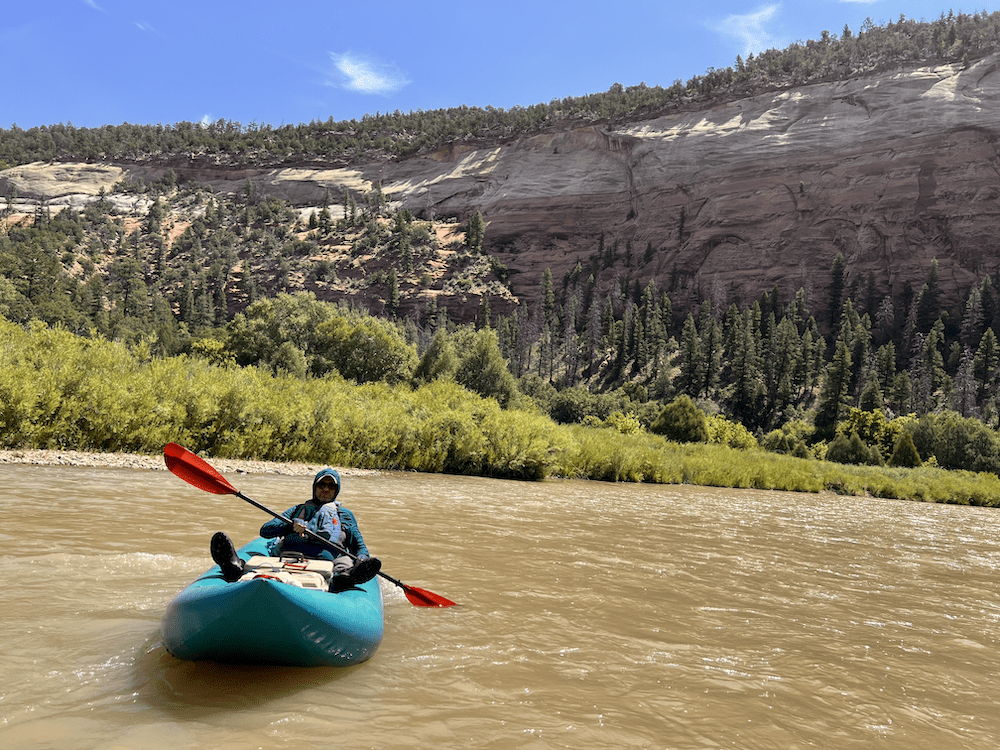
Introduction
Water is, of course, essential to life. Those of us who live in the high desert are particularly aware of this and reminded with increasing regularity that it can’t be taken for granted. For New Mexicans, rivers are inseparable from our history, our culture, our traditional uses, how we recreate, and our very identity. Rivers are also critical to wildlife—90% of New Mexico’s biodiversity (the fourth highest in the country) is dependent on our riparian areas.
I was in a canoe before I could walk, and fortunate enough to grow up spending time on a river almost every weekend. Even today I never feel better than when I’m enjoying a river with friends or family. I’m frequently asked which river segments are great for kayaking in the spring, perfect for tubing in the heat of the summer, or fly-fishing in the fall. With more than 108,000 miles of rivers in New Mexico, there is plenty to choose from.
This project was conceived as a companion to our popular Wild Guide: Passport to New Mexico Wilderness publication. We’ve collected what we think are some of the best examples of river segments across the state that showcase a range of values, uses, and opportunities for this guide and will be adding more in the year ahead.
Unfortunately, rivers are increasingly at risk and water scarcity is an urgent and growing challenge. Indeed, New Mexico won the dubious distinction of having our rivers named as the “Most Endangered” in the country in 2024 by American Rivers. For a state that had one of the very first river segments protected through the 1968 Wild and Scenic Rivers Act (the Rio Grande through what is now the Rio Grande del Norte National Monument), that is particularly galling. In fact, only one tenth of one percent of our rivers’ miles currently enjoy permanent protection through wild and scenic designation. Yet, a recent survey of our membership showed that safeguarding our rivers and waters ranked as their highest concern.
Our rivers face threats from development, pollution, mining, drilling, and a hotter and drier climate. As part of our work to protect New Mexico’s wilderness, wildlife, and waters, we advocate for watersheds, headwaters, rivers, and wetlands at the local, state, and federal levels. This includes increasing the number of rivers designated as wild and scenic, as Outstanding National Resource Waters, and through water management policy reforms through the New Mexico Legislature, as examples. You can read more about the tools and strategies we use to protect the free flow of rivers, their outstandingly remarkable values, water quality, and sustainability for both people and nature in the “River Protection Strategies” chapter of this book.
I hope these descriptions and beautiful photographs and maps will bring you pleasure, that you might discover something you didn’t already know, and that they will motivate you to learn more about New Mexico Wild and how you can be a part of protecting our best public lands, wildlife, and waters. I hope, too, that this publication will provide you with the inspiration to get outside with your loved ones to discover New Mexico’s magnificent rivers. We know that is the very best path for people to become lifelong advocates.
We are committed to secure greater protections for rivers and waters now at risk. This work continues today through the board of directors, staff, volunteers, and thousands of members of New Mexico Wild. By picking up this book, you too can be part of this rich story.
Mark Allison
Executive Director and unapologetic river rat
New Mexico Wild


